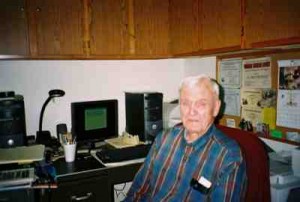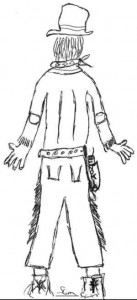Review by Martha Quillen
Sand Dunes – September 2005 – Colorado Central Magazine
The San Luis Valley – Sand Dunes and Sandhill Cranes
by Susan J. Tweit, with photographs by Glenn Oakley
Published by The University of Arizona Press, 2005
ISBN-10: 0-8165-2424-6 (pbk. alk paper)
THE SAN LUIS VALLEY covers a lot more than dunes and cranes. In fact, author Susan Tweit explains the geology, the geography, the culture, and some of the political issues in the Valley — all in a mere 78 pages, which includes photos by Glenn Oakley.
However, Tweit, a field ecologist and nature writer who lives in Salida, is at her lyrical best when she writes about cranes — and her words are not only mellifluous, they’re informative. Tweit expounds on what cranes eat, where they migrate, and how much they weigh. Describing a visit to the Monte Vista National Wildlife Refuge, she writes:
“There were tall cranes and shorter cranes, grayer cranes and dusty brown cranes. Some stood in pairs, facing one another and practicing the ballet-like moves of crane courtship; some chased each other, feigning swordplay with their long beaks….
“A pair began courting just a few feet away. One gray bird leaped into the air on long legs, wings spread wide, then landed, legs bent in bowing motion; the other leapt up too, then bowed … As hundreds of cranes fed and stalked and hopped around them, the pair continued their dance, facing each other as if they were completely alone, as if they were the only two cranes in the world.”
Tweit also manages to bring a measure of lyricism to her passages about water problems in the valley:
“The most audacious scheme to wring money from the valley’s hidden bounty and the biggest threat to both the dunes and the valley’s wetlands came out of the economic boom of the 1980s. In 1986, American Water Development filed for the right to pump 200,000 acre-feet per year of water from the aquifer under the Baca Ranch, a sprawling chunk of the valley bordering Great Sand Dunes on the north, in order to sell the water to the thirsty cities on Colorado’s Front Range. The multi-million dollar scheme envisioned piping water directly through the Sangre de Cristo mountain range and down the Arkansas River, thus reversing, at a hefty cost, the geological processes that had separated the drainages millennia ago.”
Glenn Oakley’s stark black and white photos illustrate the mountains, dunes, dancing birds, lonely expanses and natural beauty of the San Luis Valley. (But perversely, my favorite illustration was one in which cranes spiraled in formation, looking more like fighter planes than birds.)
The San Luis Valley is a short, melodic book with haunting photos. But its brevity sometimes tends toward oversimplification, and in a few places, I felt the text was likely to inspire false impressions. For example, Tweit writes:
“Long droughts in the 1200s made life in the low deserts more tenuous and drew other Indian groups to the San Luis Valley’s dependable water. Apaches from the Southwest and Arapaho, Cheyenne, Comanches, and Kiowa from the Great Plains moved in and out of the San Luis Valley with changing seasons and political alliances. By 1400, several bands of Utes, pushed out of their homes in the Great Basin by drought and other Indian groups, claimed the San Luis Valley as their summer home.”
This passage makes it sound as if the Utes were among the last of the Native American tribes to arrive in Colorado, when in fact, they were among the first (and according to some accounts, may have always wandered here). Although the Utes are thought to have originally called Nevada home, they lived in Colorado by the 1400s, as Tweit indicates. But at that point, many eventual Coloradans had not yet arrived.
The Cheyenne and Arapaho, for example, were originally woodland tribes from the Missouri River/Great Lakes area. After they were crowded out of that region by tribes fleeing Eastern settlers, they both settled in the Black Hills, then finally arrived in Colorado in the early 1800s.
The Comanche and Kiowa lived north of Colorado when the 1600s waned. But that area was rapidly filling with new competitors, so they headed south in the early 1700s into what would one day become Colorado and New Mexico – no doubt drawn by tales of Spanish horses available for the taking.
And although the Apache and “Apache de nabajo” (as the Spanish called them) have been in our region for a long, long time, they are also immigrants — who once left Canada to migrate south and probably arrived in our region circa 1200.
Tweit also mentions Paleo-Indians and Clovis man. But she doesn’t actually explain the succession of Folsom, Plano, Archaic, Anasazi, or Fremont inhabitants. Instead she says the Clovis people (who hunted wooly mammoths) were followed by archaic hunter-gatherers who “hunted smaller game like waterfowl and rabbits.”
And yes, the mammoth hunters and their “giant prey” did eventually “vanish” as Tweit contends, but Clovis successors hunted bison, elk, and deer, too — a fact that this passage tends to obscure.
Thus, I thought that some things — like local culture and geology — were a little too abbreviated for comfort in this volume. But this book clearly wasn’t meant to be a comprehensive text.
There are places, however, where the brevity of this volume does seem to suggest a simpler, more stereo-typical version of events than actually occurred — and that’s unfortunate.
But The San Luis Valley is pretty and poetic. The text is clear; the photos are artistic, and it’s perfect for that casual reader who is curious to know a little something about our region.
— And with a little luck, The San Luis Valley may inspire more people to read about local history, culture, geology, geography, wildlife, flora, and fauna. In which case, they might want to read books by Virginia Simmons and Sally Crum; Stephen Voynick and David Lavender; along with the Historical Atlas of Colorado; Colorado: A History of the Centennial State; A Colorado History; Bury My Heart at Wounded Knee; George Bent’s autobiography; other books by Susan Tweit; column collections by George Sibley and Ed Quillen; more of the books we review here, and Colorado Central Magazine….


